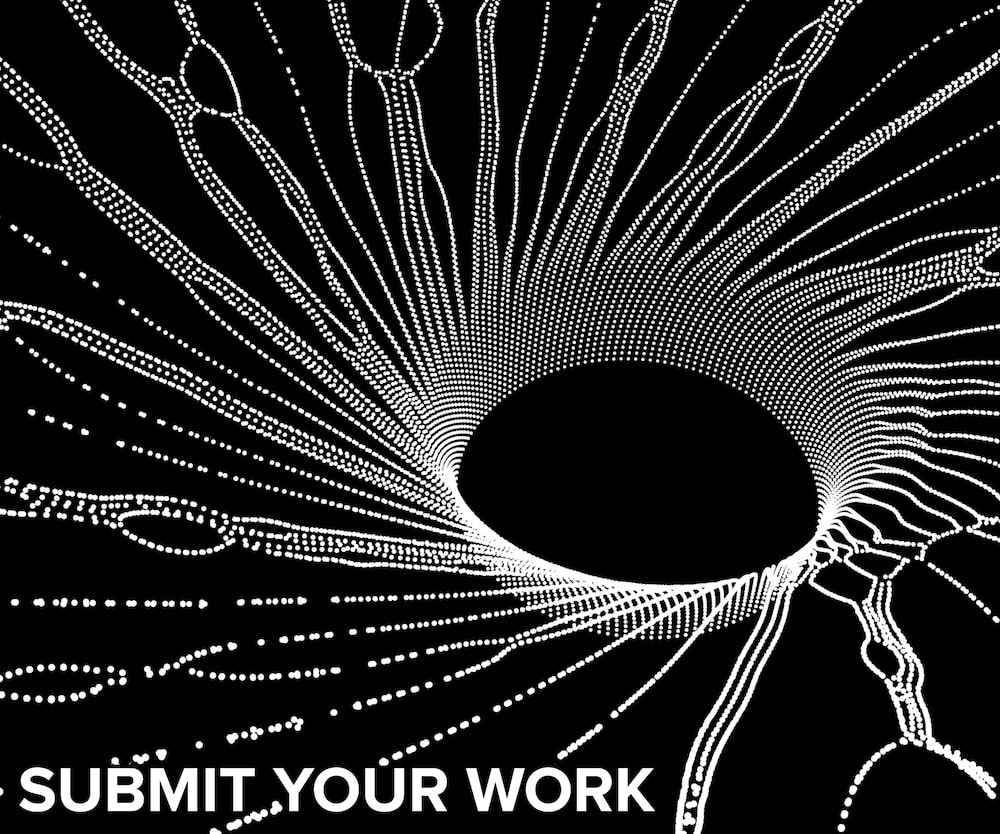‘A Brief History Of Time’: Artist Challenge
The Science Friday Book Club invites you to submit your artistic imaginings of Stephen Hawking’s visions of the universe.
 This story is part of our summer Book Club conversation about Stephen Hawking’s 1988 book ‘A Brief History of Time.’ Want to participate? Sign up for our newsletter or call our special voicemail at 567-243-2456.
This story is part of our summer Book Club conversation about Stephen Hawking’s 1988 book ‘A Brief History of Time.’ Want to participate? Sign up for our newsletter or call our special voicemail at 567-243-2456.
The universe is expanding, pulling, changing—and dragging time, energy, and matter along with it. Stephen Hawking captured the dynamic machinations of the universe in what became one of the most popular and widely-circulated popular science books of this century: A Brief History Of Time.
This summer, the Science Friday Book Club is reading Hawking’s monumental work. We’ll be stepping through black holes and wading through fundamental particle soup with young and diverse physicists, authors, dancers, and more.
 Artists, we want your help interpreting Stephen Hawking’s vision of the universe.
Artists, we want your help interpreting Stephen Hawking’s vision of the universe.
We’re collaborating with the online artists’ network Ello to host a portfolio competition for artists who can help us hook the next generation of theoretical physicists, mathematicians, and science communicators by interpreting Hawking’s vivid depictions of the universe with art.
Selected artists will be commissioned to represent one of the quotes below with illustration, short animation, or graphic art. They will receive $400 for their work. Their work will appear in a collection featured on sciencefriday.com and promoted for the conclusion of our reading of A Brief History of Time this August. And if you’re not a professional artist, never fear. This contest is open to all. Simply create a portfolio on Ello.
Get inspired by some of our favorite quotes from A Brief History of Time below, then view our artist invitation on Ello to enter.
Event Horizon
“The event horizon, the boundary of the black hole, is like the edge of a shadow—the shadow of impending doom. If you look at the shadow cast by a source at a great distance, such as the sun, you will see that the rays of light in the edge are not approaching each other.”
“…the boundary of the black hole, the event horizon, is formed by the light rays that just fail to escape from the black hole, hovering forever just on the edge. It is a bit like running away from the police and just managing to keep one step ahead but not being able to get clear away!”
The Expanding Universe
“The situation is rather like a balloon with a number of spots on it being steadily blown up. As the balloon expands, the distance between any two spots increases, but there is no spot that can be said to be the center of the expansion. Moreover, the further apart the spots are, the faster they will be moving apart.”
Space-time
“In general relativity, bodies always follow straight lines in the four-dimensional space-time, but they nevertheless appear to us to move along curved paths in our three-dimensional space. (This is rather like watching an airplane flying over hilly ground. Although it follows a straight line in three-dimensional space, its shadow follows a curved path on two-dimensional ground.)”
Gravitational Balance
“If [the universe] was expanding fairly slowly, the force of gravity would cause it eventually to stop expanding and then to start contracting. However, if it was expanding at more than a certain critical rate, gravity would never be strong enough to stop it, and the universe would continue to expand forever. This is a bit like what happens when one fires a rocket upward from the surface of the earth. If it has a fairly low speed, gravity will eventually stop the rocket and it will start falling back. On the other hand, if the rocket has more than a certain critical speed (about seven miles per second), gravity will not be strong enough to pull it back, so it will keep going away from the earth forever.”
Time
“Consider a pair of twins. Suppose that one twin goes to live on the top of a mountain while the other stays at sea level. The first twin would age faster than the second. Thus, if they met again, one would be older than the other. In this case, the difference in ages would be very small, but it would be much larger if one of the twins went for a long trip in a spaceship at nearly the speed of light. When he returned, he would be much younger than the one who stayed on Earth…In the theory of relativity, there is no unique absolute time, but instead each individual has his own personal measure of time that depends on where he is, and how he is moving.”
Up Quarks, Down Quarks
“Pauli’s exclusion principle says that two similar particles cannot exist in the same state; that is, they cannot have both the same position and the same velocity, within the limits given by the uncertainty principle… If the world had been created without the exclusion principle, quarks would not form separate, well-defined protons and neutrons. Nor would these, together with electrons, form separate, well-defined atoms. They would all collapse to form a roughly uniform, dense “soup.”
Black Hole Energy
“One such (small, primordial) black hole could run ten large power stations, if only we could harness its power. This would be rather difficult, however: the black hole would have the mass of a mountain compressed into less than a million millionth of an inch, the size of the nucleus of an atom! If you had one of these black holes on the surface of the earth, there would be no way to stop it from falling through the floor to the center of the earth. It would oscillate through the earth and back, until eventually it settled down at the center.
Our Smooth Universe?
“If the universe is indeed spatially infinite, or if there are infinitely many universes, there would probably be some large regions somewhere that started out in a smooth and uniform manner. It is a bit like the well-known horde of monkeys hammering away on typewriters—most of what they write will be garbage, but very occasionally by pure chance they will type out one of Shakespeare’s sonnets. Similarly, in the case of the universe, could it be that we are living in a region that happens by chance to be smooth and uniform? At first sight this might seem very improbable, because such smooth regions would be heavily outnumbered by chaotic and irregular regions. However, suppose that only in the smooth regions were galaxies and stars formed and were conditions right for the development of complicated self-replicating organisms like ourselves who were capable of asking the question: why is the universe so smooth?”
Ariel Zych was Science Friday’s director of audience. She is a former teacher and scientist who spends her free time making food, watching arthropods, and being outside.